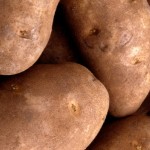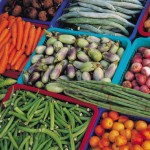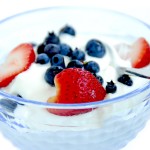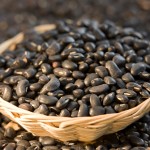One dish and that’s it! This heart healthy salmon bake contains an abundance of omega-3 fatty acids and cancer fighting antioxidants. Omega-3′s are less likely to be stored as fat due to their many important functions throughout our body. They’re also known to ease joint pain, improve cognitive function, and decrease belly fat. Spinach, well-known for it’s high iron content is loaded with antioxidants like vitamins A, C, and K. The green leafy powerhouse and colorful fingerling potatoes combine to add a generous amount of heart healthy fiber.
Ingredients:
• 1 lb fingerling potatoes, washed and quartered
• 2-3 salmon filets, skinned
• 3 c baby spinach, washed
• extra virgin olive oil
• 1/2 lemon, juiced
• 1 teaspoon rosemary, crushed
• sea salt, to taste
• balsamic glaze, to taste
• orange ginger seasoning, to taste, *a little goes a long way.
Directions:
1. Heat oven to 400 degrees. Coat baking pan with no stick cooking spray.
2. Place potatoes on bottom of pan. Lightly coat with olive oil, sprinkle with rosemary and sea salt. Bake alone for 20 minutes.
3. Remove potatoes from oven and turn oven temperature down to 350 degrees.
4. Place spinach on top of potatoes. Toss spinach with olive oil and sea salt. Place salmon over spinach. Top with lemon juice and orange ginger seasoning.
5. Bake for 40 min or until internal temperature of salmon is 140 degrees.
Helen Agresti is a Registered Dietitian with Professional Nutrition Consulting, LLC. She lives in Pennsylvania with her husband and 5 children. For more Nutrition advice and healthy recipes follow her on twitter @HelenAgresti. For more information and recipes, go to www.pronutritionconsulting.com
 Subscribe
Subscribe








